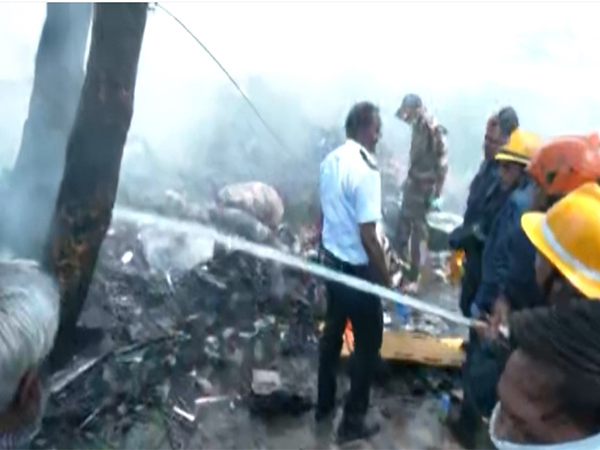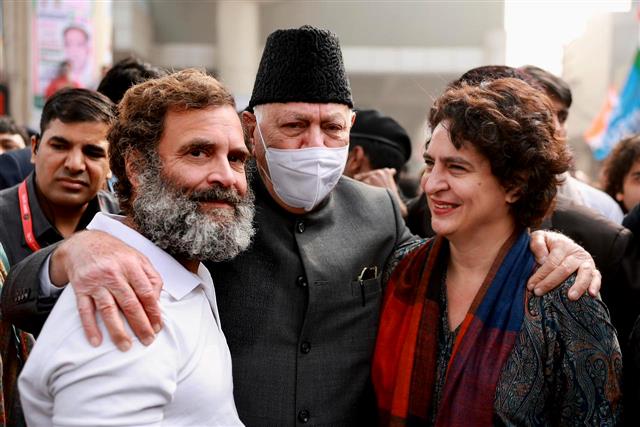A Dark Day in Indian Aviation History
Updated: June 12, 2025 | By Javid Amin
On June 12, 2025, Indian skies witnessed their first fatal crash of a Boeing 787 Dreamliner. Air India Flight AI171, freshly departed from Ahmedabad bound for London Gatwick with 242 souls onboard, crashed into the densely populated Meghani Nagar district—detonating near the doctors’ hostel at B. J. Medical College in a fiery, devastating impact .
Preliminary reports suggest at least 290 lives lost, including passengers, crew, and individuals on the ground. This includes former Gujarat Chief Minister Vijay Rupani, whose presence onboard has emerged as a deeply tragic element of the story.
In the midst of overwhelming loss, a single miracle surfaces: 38-year-old Ramesh Vishwaskumar Bucharvada, a passenger who survived the crash by reportedly jumping from the aircraft seat near an emergency exit shortly before impact, was later seen walking away from the wreckage.
The Crash & Its Immediate Fallout
01 Flight Details & Warnings
Flight AI171 departed Ahmedabad at 13:38 IST. Within a minute, the crew issued a Mayday distress signal, and the aircraft reached a height of just 625 ft before losing control and descending into residential housing.
02 Aircraft History & Significance
The aircraft, VT‑ANB, had flown since 2014 with a clean safety record. This marks the first-ever hull loss and fatal crash of a Boeing 787 Dreamliner since its introduction in 2011 .
03 Casualties & Ground Impact
Police have so far recovered 204 bodies onboard, with over 290 deaths when including ground fatalities such as medical students and residents at the impacted hostel and surrounding homes.
04 Survivor’s Story
Miraculously, Ramesh Bucharvada survived. He is believed to have exited the aircraft through an emergency hatch seat (11A) before the crash and walked away, though severely injured.
Leadership Response & National Mourning
01 Official Statements & Relief Work
-
Prime Minister Narendra Modi described the crash as “heartbreaking beyond words,” pledging a thorough investigation and support for victims’ families.
-
Union Home Minister Amit Shah and Civil Aviation Minister Rammohan Naidu personally visited site and hospitals to coordinate rescue efforts.
-
Tata Group, Air India’s owner, pledged ₹1 crore to each victim’s family and committed to rebuilding the damaged hostel.
02 International Support
-
The UK, US, Canada, and Portugal dispatched technical teams via the AAIB and NTSB to assist with investigation protocols and victim recovery.
-
King Charles III and PM Keir Starmer offered condolences on behalf of Britain, acknowledging the tragedy and loss of their citizens .
Investigation Underway
01 Agencies Leading the Probe
Investigators from the DGCA and AAIB have joined Boeing, GE (engine manufacturer), and US NTSB investigators in a multi-agency probe .
02 Early Theories
-
Mechanical failure: sudden power loss and autopilot anomalies
-
Human factors: procedural errors during takeoff
-
Environmental: bird strikes or runway debris
Investigators are reviewing ADS-B flight data, CCTV footage showing altitude and speed before the crash, and witness testimonies—including alarming eyewitness footage from previous flights of the same aircraft indicating potential pre-existing faults .
Human Stories: Victims, Survivors & Witnesses
Lives Lost & Communities Affected
The crash tore through B. J. Medical College’s doctors’ hostel, where 60 medical students lived, resulting in at least five student fatalities and numerous injuries to others. Families in Meghaninagar are counting bodies from their homes, many witnessing loved ones disappear in the wreckage.
A Miraculous Survivor
British-Indian passenger Vishwash Kumar Ramesh (40), seated in 11A, is the only known survivor. Pulled alive from the flaming fuselage, he suffered chest, eye, and foot injuries and remains in hospital under intense medical care.
“It all happened so quickly… 30 seconds after take-off, there was a loud noise and then the plane crashed,” he said from his hospital bed.
Survivor Saved by Leap
A hostel student, Ramila’s son, reportedly jumped from the second floor as debris hit, escaping with minor injuries—a narrow escape amid chaos.
Panic on the Streets
Eyewitnesses recount their horror:
-
Ramila: “My son is safe… he jumped from the second floor.”
-
Others described “massive sound,” “debris scattered,” and flames shooting up—villagers ran for their lives as the aircraft struck buildings.
These personal tales illuminate the staggering human toll—more than headlines ever could.
Aviation Industry & Boeing: Reputation at Stake
A First for the 787
Flight AI171 is the first fatal crash involving a Boeing 787 Dreamliner, a jet celebrated for its advanced composite structure and fuel-efficiency since 2011.
Scrutiny on Boeing’s Safety Culture
The crash reopens concerns about Boeing’s manufacturing oversight:
-
Past quality issues—faulty parts, production shortcuts, supply-chain failures—have plagued Boeing.
-
Whistleblower John Barnett revealed safety compromises, including oxygen system faults and ignored defects in the 787 line.
-
These revelations come after high-profile 737 MAX failures, suggesting systemic issues persist.
A Boeing spokesperson has pledged full cooperation with investigators, even as the company’s stock dipped 4% on renewed crisis fears.
Safety Protocols & Restoring Public Trust in Indian Aviation
Emergency Response Timeline
After AI171’s crash, local teams—CISF, fire services, ambulances, and army medics—swooped in immediately. The airport shut down, roads were sealed, and debris cleared under tight security.
Regulator Action
The DGCA and AAIB now lead a full probe with Boeing, GE, and international authorities. Flight data, CCTV, maintenance logs, crew records, and eyewitness statements are under scrutiny.
Public Trust—A Fragile Rebuilding Path
With recent concerns in Indian aviation—spanning Mangaluru (2010) to Kozhikode (2020)—this crash chips away public confidence. Rebuilding trust will require:
-
Transparent investigation updates
-
Clear support for victims
-
Industry-wide safety audits
Prime Minister Modi and Civil Aviation Minister Naidu’s involvement signals seriousness here.
Implications for Dreamliner Operations Globally
Worldwide Fleet Grounding?
A death in a 787 crash could lead to precautionary groundings, inspection orders, or route restrictions—echoing earlier measures for the Boeing 737 MAX.
Regulator Reassessments
Global authorities—the FAA, EASA, DGCA—may demand reevaluation of power systems and composite materials, especially if a technical fault is confirmed.
Impact on Boeing’s Reputation
Once Boeing’s flagship aircraft, the 787 was prized for cutting fuel use ~20%, thanks to its composite structure. Now shareholders, airlines, and governments will expect enhanced design safeguards and production transparency.
Aviation Industry-wide Reforms
This crash may catalyze:
-
New licensing mandates for composite aircraft
-
Expanded investigation protocols focusing on pilot training, supply chain, and automated systems
-
Renewed focus on cockpit automation safety
Rescue, Health & Psychological Aftercare in Ahmedabad
Relief on the Ground
Seven fire engines, ambulances, CISF, and army help coordinated rescue. Hospitals set up emergency units and isolation wards. Up to 60 injured students were treated, with 41 still hospitalized.
Medical & Psychological Support
Air India, Tata Group, and government agencies have:
-
Deployed caregivers and social workers
-
Opened 24×7 helplines for affected families
-
Arranged counseling services for trauma, especially for doctors and students impacted
Hostel Reconstruction & Community Care
Tata committed to rebuilding the damaged doctors’ hostel. The state government is providing compensation and free medical care to ground victims’ families. Ambulance services continue to support local residents.
Section Summary
| Topic | Key Takeaways |
|---|---|
| Human Stories | Highlights of lives lost, miraculous survival, community trauma |
| Boeing Fallout | First 787 fatal crash; scrutiny over design, production, safety culture |
| Safety Protocols | Swift rescue, transparent investigation, trust rebuilding |
| Global Operations | Possible groundings, regulatory reforms, design review |
| Aftercare Response | Medical, psychological, financial relief initiatives underway |



